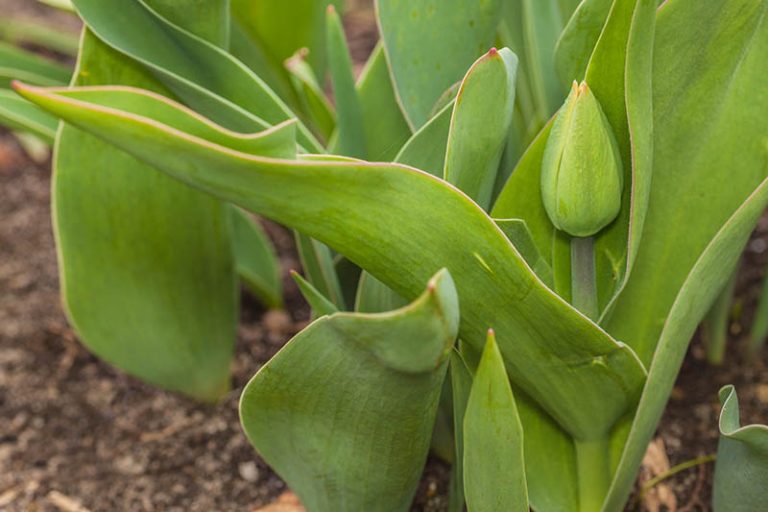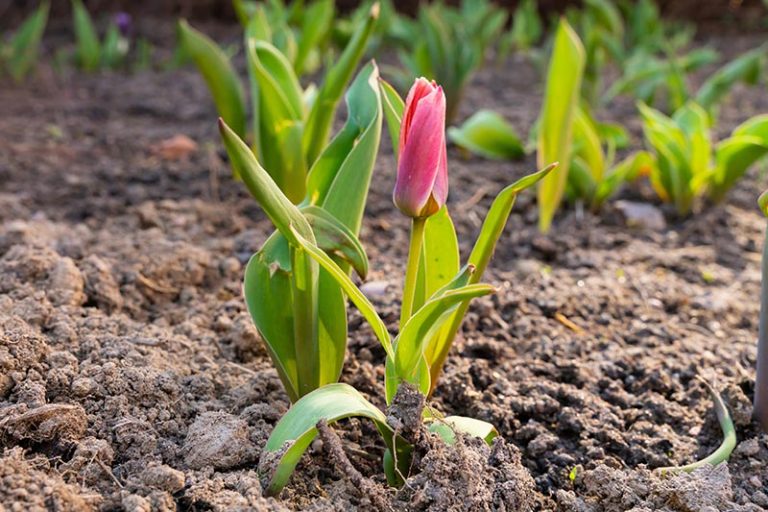Why Are My Tulip Leaves Turning Yellow
If you've ever asked yourself "Why are my tulip leaves turning yellow?" don't worry, you're not alone. Many gardeners have faced this problem and it can be frustrating when you don't know what's causing it. As tulips are popular spring-blooming flowers, it is important to know why their leaves are yellowing prematurely. In this post, we will explore the different reasons behind this issue and provide solutions to help you keep your tulips healthy and vibrant.
Tulip leaf yellowing pain points
Yellowing leaves can be a sign of stress or disease, and it can be hard to determine the underlying cause. Tulips are particularly susceptible to yellowing leaves, and it can be a sign of bigger problems such as fungal disease, insect infestation, or nutrient deficiency. In some cases, it may just be a natural part of the tulip's life cycle. It can be frustrating to see your beautiful tulips fading away, so figuring out why your tulip leaves are turning yellow is important to keep your garden looking its best.
Reasons behind tulip leaf yellowing
There are several reasons your tulip leaves may be turning yellow. One of the most common causes is fungal disease, specifically tulip fire or Botrytis blight. These diseases are caused by excessive moisture and can lead to yellowing leaves, malformed flowers, and eventually, death of the bulb. Another common cause of yellowing leaves is insect infestation, specifically aphids and thrips, which can damage the leaves and sap vital nutrients, leading to premature yellowing. Nutrient deficiencies, particularly lack of nitrogen, can also lead to yellowing leaves.
Summary of tulip leaf yellowing
In summary, tulip leaf yellowing can be caused by a variety of reasons, including fungal disease, insect infestation, and nutrient deficiencies. It's important to identify the underlying cause in order to properly treat the issue and keep your tulips healthy. Next, we will delve deeper into each of these causes and provide solutions to help address the problem.
Fungal disease
Tulip fire and Botrytis blight are two of the most common fungal diseases that affect tulips. Tulip fire is caused by the fungus Botrytis tulipae and can cause brown spots on the stem and yellowing of the leaves. It is important to remove infected leaves and bulbs immediately and to ensure proper airflow around your plants. Botrytis blight, caused by the fungus Botrytis cinerea, can cause a grey mold on the bulb, resulting in yellowing leaves and stem. To treat Botrytis blight, remove any infected leaves and bulbs, and ensure proper drainage and ventilation in your soil. Fungicides are also available to treat fungal diseases.

Insect infestation
Aphids and thrips are two common pests that can damage your tulip leaves and lead to yellowing. Aphids are small, pear-shaped insects that can suck the sap from the leaves, leading to distortion and yellowing. They can be treated with insecticidal soap or neem oil. Thrips are tiny insects that feed on the leaves and petals of tulips, causing them to turn yellow and become deformed. They can be treated with insecticidal soap, pyrethrin, or neem oil.

Nutrient deficiencies
Lack of nutrients, particularly nitrogen, can cause yellowing leaves in tulips. Nitrogen is an essential nutrient for the growth and development of plants, and a lack of it can lead to yellowing of leaves. To remedy this, you can apply a nitrogen-rich fertilizer to your soil. Other nutrients, such as phosphorus and potassium, are also important for proper tulip growth and development.

Preventing tulip leaf yellowing
Prevention is always better than cure, so it's important to take steps to prevent tulip leaf yellowing. Proper soil drainage and ventilation are crucial, so make sure your soil is well-draining and not waterlogged. Avoid overwatering your tulips, and instead water them deeply but infrequently. Proper soil nutrient levels are also important, so regularly test your soil and apply the necessary nutrients. Remove any fallen leaves or debris around your tulips to prevent fungal growth. Finally, ensure proper airflow and spacing between your tulips to prevent overcrowding and the spread of disease.
Question and Answer
Q: How do I know if my tulip leaves are yellowing due to fungal disease?
A: Look for brown spots on the stem and yellowing of the leaves, which are signs of tulip fire. Grey mold on the bulb is a sign of Botrytis blight. Proper diagnosis is important to ensure proper treatment.
Q: How can I prevent yellowing leaves in my tulips?
A: Proper soil drainage and ventilation, regular soil testing, and ensuring proper spacing between tulips are all important steps to prevent yellowing leaves. Avoid overwatering your tulips, and remove any fallen leaves or debris around your tulips to prevent fungal growth.
Q: Can I use natural remedies to treat yellowing tulip leaves?
A: Yes, there are natural remedies such as neem oil, insecticidal soap, and pyrethrin that can be used to treat insect infestations. Additionally, applying nitrogen-rich organic fertilizers can help address nutrient deficiencies.
Q: When is the best time to plant tulip bulbs?
A: Tulip bulbs should be planted in the fall, ideally around 6-8 weeks before the first frost. This allows them enough time to establish healthy roots before the cold winter months.
Conclusion
Tulip leaf yellowing can be a frustrating problem, but with the right knowledge and care, it can be easily prevented and treated. It's important to identify the underlying cause of yellowing leaves in order to properly address the issue and keep your tulips healthy. By following the proper prevention and treatment techniques, you can ensure that your tulips will bloom beautifully year after year.
Gallery
9 Reasons Why Tulip Leaves Turn Yellow Prematurely | Gardener’s Path

Photo Credit by: bing.com / prematurely gardenerspath gardener tulips
9 Reasons Why Tulip Leaves Turn Yellow Prematurely | Gardener’s Path

Photo Credit by: bing.com / diligent likely cultivation yellowing avoided nine
9 Reasons Why Tulip Leaves Turn Yellow Prematurely | Gardener’s Path

Photo Credit by: bing.com /
9 Reasons Why Tulip Leaves Turn Yellow Prematurely | Gardener’s Path

Photo Credit by: bing.com / tulip bokeh tulipano sviluppa cresce tulipa bonito bello fiore soil prematurely reasons why beneath clue gardenerspath
Why Tomato Plants Leaves Turn Yellow | Plant Leaves, Plant Leaves

Photo Credit by: bing.com /